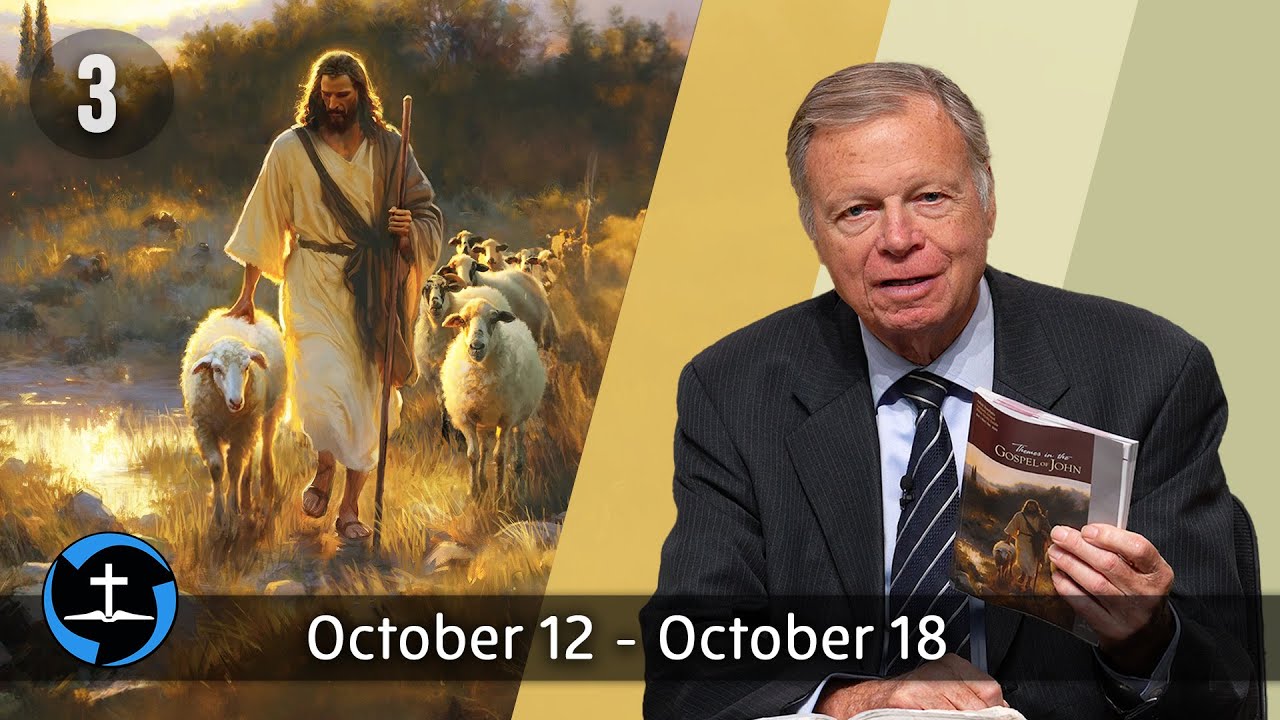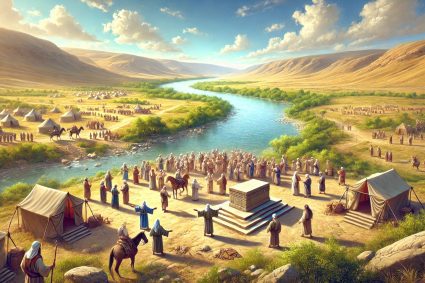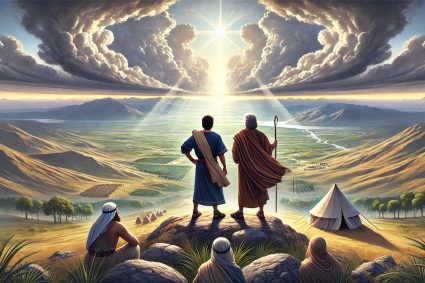
Series JESUS IN THE GOSPEL OF JOHN with Pastor Mark Finley |
Lesson 3.The Prelude: The Prologue |
Divine Revelation: The Prologue in the Gospel of John |
Lesson 3 describes the prologue of the Gospel of John, which introduces Jesus as the eternal Logos (Word) that was with God from the beginning and is God Himself. John emphasizes that Jesus is the true Light that comes into the world to enlighten it, yet many reject Him. Through His incarnation, the divine Word becomes flesh and reveals God’s glory directly among humans. The prologue conveys the profound truth of Jesus’ divine nature and His mission to save people and unite them with God. Thus, it lays the foundation for the entire Gospel, unfolding Jesus’ life and work.
Memory Text: John 1:1 – “In the beginning was the Word, and the Word was with God, and the Word was God.”
Content:
3.1 In the Beginning – The Divine Logos
The Eternal Nature and Creative Power of the Divine Logos
John 1:1–5 reveals the divine nature of Jesus, the “Word,” and His role as Creator. John begins his Gospel by referencing the beginning, thereby affirming the eternal existence of Christ, who was before creation. He further explains that Jesus was with God, indicating the close relationship between the Son and the Father. At the same time, it is emphasized that Jesus Himself is God, which the Greek text clarifies by highlighting the divine attributes of the Word. Additionally, Jesus is depicted as the Creator through whom everything that exists was made. John thus highlights the central role of Jesus in the divine plan and in creation.
3.2 The Word Made Flesh
The Word Became Man: God’s Radical Nearness to Us
John 1:1-3,14 shows the profound truth that Jesus, the eternal Logos, God Himself, became flesh and lived among us. John emphasizes that the Logos is not an abstract idea but a person: Jesus Christ. This incarnation reveals God’s closeness and love for humanity by entering our world and living with us. The image of “dwelling among us” recalls the sanctuary where God was with the Israelites, now God comes to us in human form. This truth demonstrates the most radical form of God’s revelation and highlights how deep His love is. It is a source of comfort, as the Creator Himself became human to save us.
3.3 Hearing or Not Hearing the Word
Hearing or Rejecting the Word: People’s Response to the Light
John 1:9-13 describes the bitter reality that not all people accept the Light of Jesus Christ that has come into the world. Although He is the true Light that brings clarity to every person, many reject Him, especially His own people, Israel. This theme of accepting or rejecting Jesus runs throughout the entire Gospel of John. Nevertheless, John offers hope: all who accept Jesus become children of God through faith. This connection between the beginning and the end of the Gospel emphasizes the main goal: faith in Jesus as Savior and the gift of eternal life.
3.4 Reappearing Themes—Belief and Unbelief
The Response to the Light
In John 3:16–21, 9:35–41, and 12:36–46, the central theme of faith and unbelief, already introduced in the prologue, is deepened. In these passages, people are divided into two groups: those who believe in Jesus and accept the Light, and those who reject the Light and remain in darkness. John emphasizes that faith is active—it is not just about intellectual understanding but a heart attitude that is expressed in actions. Believers let the Light of Jesus shine into their lives and become children of God, while unbelievers avoid the Light and remain hostile toward Jesus. This separation underscores the profound significance of the decision to follow or reject Jesus.
3.5 Recurring Themes – Glory
Recurring Themes: Glory on the Cross
In John 17:1–5, Jesus speaks about His “hour” having come, which is associated with His glorification—a paradoxical glory revealed on the cross. While crucifixion was the most humiliating form of death in the ancient world, John portrays the cross as the pinnacle of divine glory. Jesus prays to the Father to glorify Him so that He can glorify the Father, pointing to the impending sacrifice and victory over sin. This glorification is manifested not only in the resurrection but also in the infinite love revealed in Jesus’ sacrificial death. It is a powerful contrast: the deepest human shame becomes the greatest moment of divine glory and redemption.
3.6 Summary
The Prelude to the Gospel: The Prologue and the Divine Word
In Lesson 3, the prologue of the Gospel of John addresses the eternal nature of Jesus and His role as the divine Logos (Word). John begins with the statement that Jesus was with God from the beginning and is Himself God. Jesus is described as the Light that comes into the world to enlighten people, yet many reject Him. Through the incarnation, the divine Word becomes flesh, and Jesus reveals God’s glory directly among humans. This prologue lays the groundwork for understanding the person of Jesus and His mission to reconcile people with God.
(Visited 14 times, 1 visits today)




















